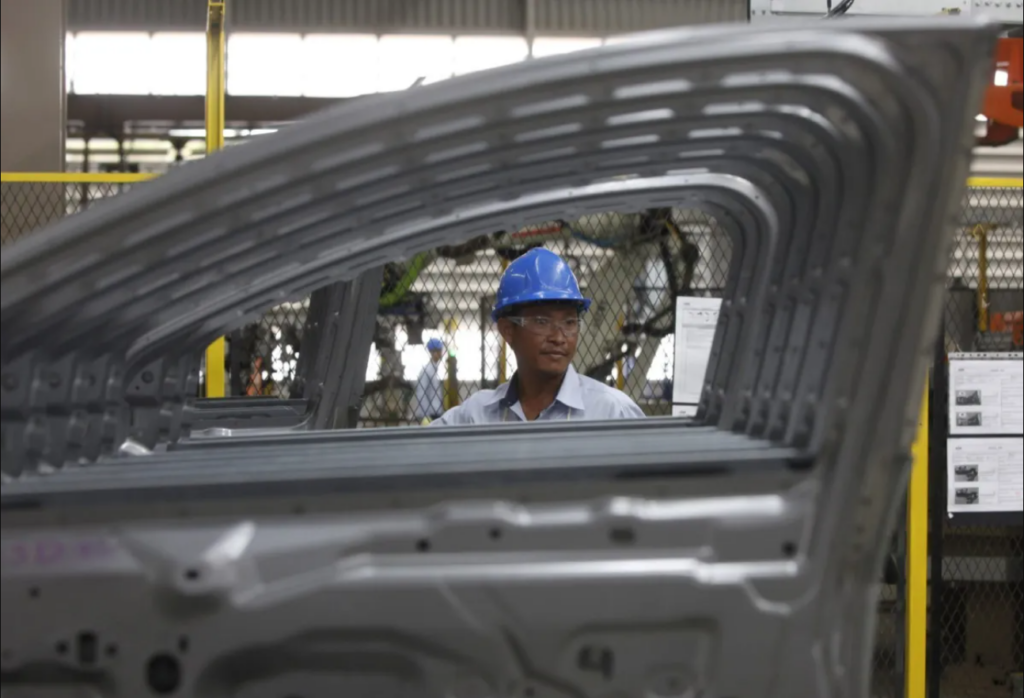
Asian Development Bank and International Monetary Fund 2023 economic outlooks for Southeast Asia are optimistic. Over the next two years, “developing” Asia will lead global economic development.
Southeast Asian economy fared well despite lockdowns. The region’s economy is threatened by both protectionist measures and geopolitical tensions between the US and China.
Manufacturers have moved some output out of China to avoid tariffs and blacklists, benefiting Southeast Asia. Despite some “re-shoring,” more investment has shifted to Southeast Asian countries.
Last two years saw high FDI inflows to Singapore, Vietnam, Malaysia, and Indonesia. Southeast Asian elites also benefit from foreign power competition in infrastructure projects and financing.

A deeper structure will influence Southeast Asia’s rising geopolitical tension.
Southeast Asian economic growth is open. Foreign markets and investment drive regional growth and industrialisation. “Internationalist” alliances that promoted their fundamental interests and gained access to international markets and investment have driven prosperity.
Southeast Asian countries have a wide range of domestic institutions—structures and regulations that control behavior and make growth feasible.
State and private sector institutions influence how individuals and corporations solve coordination, commitment, and collective action issues. Such nations seldom achieve sustainable economic growth.
Southeast Asia’s institutional diversity means countries will respond to geopolitical problems and opportunities differently.
Some are better positioned to benefit from supply chain restructuring and investment shifts spurred by supply security or geopolitical risk.
Indonesia’s mineral wealth and nationalist politics have spurred new investments, while Thailand’s automotive expertise attracts Chinese and other diversifying investors.
Southeast Asian geopolitical reactions will also be influenced by domestic politics. Governments must integrate larger political forces and deal with rent-seeking elites.
Demands “from below” include wealth redistribution, domestic consumption, and poverty reduction. Climate change and environmental restrictions to extractive development techniques also provide issues.
Elite solutions to these difficulties range from more inclusion to the mobilization of vertical allegiances to deflect material frustrations through the politics of race, religion, or royalty.
Finally, the region’s long-term escalation in great power competition matters. East Asia’s power transfer challenges Southeast Asia.
For 30 years, the area has flourished through growing integration into a Chinese-centric regional economy, while the US’ security role reduced worries over asymmetric reliance.
This approach is unsustainable. The Chinese economy and economic model still have gravitational power and political attraction.

US security is under threat. Before the 2017 US-China tensions, internal political and economic limitations rendered the US less willing and able to maintain the status quo. Chinese military and technology advancements exacerbate this fundamental change.
Internal and external influences affect the region’s development plans and growth trajectories.
Southeast Asia benefits from supply chain “friend-shoring” and US-China competitiveness. Geopolitical tension’s positive spillovers raise potential entanglement and susceptibility.
Others have invested in dual supply chains to service disconnected technological domains. They bet on the US and China to tolerate this dualism.
Southeast Asian countries, entangled in cross-border investment and commercial connections that span geopolitical divides, have made the same gamble.
Samsung’s large investments in Vietnam are supported by a coalition of interests that depend on Samsung’s status as a non-suspect entity in the US. The Vietnamese economy also heavily relies on Chinese supply chain links.
If foreign powers’ security worries grow, this relationship will expose regional countries. Reprisals, blacklists, and penalties might potentially endanger cross-border relationships between corporations, research institutions, universities, and government organizations.
These ties indicate US-China confrontation in Southeast Asian local economies is growing.
New Zealand Asia Institute Director Natasha Hamilton-Hart is a University of Auckland professor in the Department of Management and International Business.
